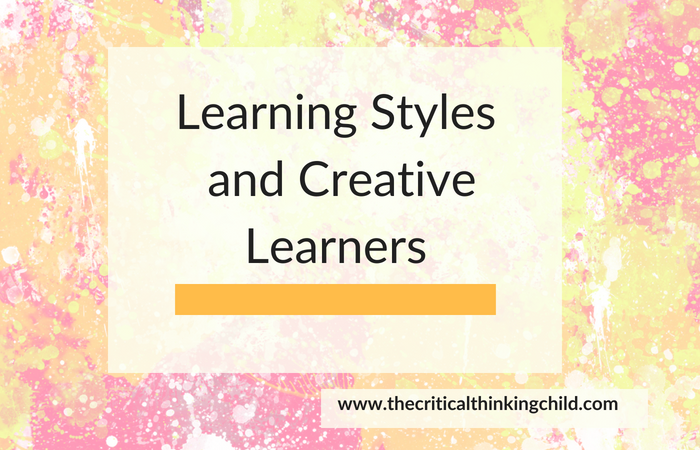Is your child an artist, a collector, or a dreamer? They might have a creative learning style.
This is the final blog post in a series about learning preferences and how they can be leveraged to help your child grow. So far, we’ve covered literary learners, active learners, and analytical learners. Today we’re going to dive into the final type of learner: creative learners.
Understanding how your child naturally learns will allow you to play to their strengths, giving them a greater chance of understanding new concepts and falling in love with the learning process. You’ll also have a greater understanding of your child’s challenges, so you can face them head on, with a clear strategy in place (for an overview of all the learning styles, click here).
Let’s dive in.
What is a creative learner?
Creative learners can often be found thinking outside of the box, at their own pace. They often wind up wandering behind the rest of the group, picking up feathers, buttons, or other knick-knacks for their collection and thinking of alternative uses for them.
You’ll find that creative learners love to build and create in many different forms, so they may be interested in Legos, painting, music, drama, or blocks. They take their toys beyond their intended use and use traditional toys like trains and dolls to come up with new and innovative games and universes. Creative learners are independent and, while they don’t directly challenge rules, they can sometimes be found marching to the beat of their own drummer in a world of their own.
Strengths of creative learners
Creative learners are intrinsically motivated and independent; when they are interested in a task or creation, they will see it through with very little assistance needed from adults. They also think deeply about whatever they’re working on and will come up with new levels of depth in traditional topics. Because of this, creative learners often come up with innovative ideas and are easily able to picture the finished product of an invention, a play, a painting, or a song.
Because creative learners naturally think out of the box, they often become very successful adults who come up with new ideas and inventions that make life easier for others. Creative learners are naturally curious and always want to know how their world works; this makes them engaged students who really enjoy learning when it is relevant to them. Finally, creative learners are typically confident children who are fine with being different from their peers and can take leadership roles in group activities, particularly ones that engage them like art and music.
Challenges faced by creative learners
While creative learners don’t directly challenge the rules, they can sometimes need redirection in traditional school settings where they must sit and listen for long periods of time. They may not find traditional paper and pencil tasks engaging or interesting, and they often have trouble focusing on tasks if they are not interesting to them.
Additionally, creative learners may struggle with subjects that have just one right answer (like math). They may also struggle with logical reasoning and puzzles that require a sequential, step-by-step approach. Because they are so creative, they may have “creative differences” with other creative learners who may see things from a different perspective.
How to help creative learners at home
Creative learners need space to flex their innovative minds at home. With this in mind, you can create several fun activities that help your child become a critical thinker.
For example, you can:
- Simply step back and allow your child to create with little intervention from you. See where their creativity takes them!
- Allow your child to make a mess and use materials in non-traditional ways- don’t worry, you can always clean it up later!
- Take your child to parks and other outdoor locations to explore nature.
- Ask your child to describe what they see, hear, feel, and notice to make sure that they are constantly able to talk about their observations.
- Work with your child to plan a meal and let them cook it independently.
When coming up with activities for your creative child, lean into their natural independence and tendency to think outside of the box. This will show them that they can use their creativity all by themselves and will empower them moving forward.
Creative learners are independent, fun learners who come up with fantastic products! Enjoy fostering their independence and see what they create!



